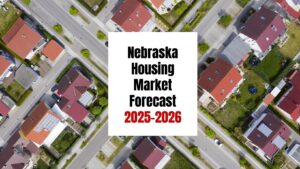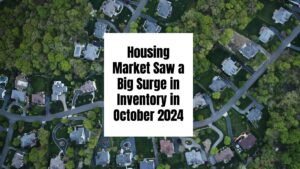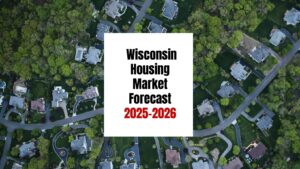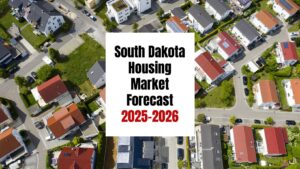Are you curious about the Alaska housing market trends in 2024? Well, the news is mixed. While home prices have continued to climb, increasing by a notable 6.6% year-over-year, the number of homes sold has dipped, and the supply of homes for sale has actually increased. This suggests that while the market is still relatively strong, the rapid growth seen in previous years has slowed down a bit, creating a more balanced environment for both buyers and sellers. Let's explore the various aspects of the Alaska housing market and what it all means for you.
Alaska Housing Market Trends in 2024: A Deep Dive
Home Sales
According to Redfin, in September 2024, the number of homes sold in Alaska experienced a decline of 11.0% compared to the same period last year. This decrease can be attributed to a variety of factors. One factor is the rising interest rates which has made it more expensive for many people to buy a home. Also, many potential buyers may be holding back due to the economic uncertainty. However, even though the number of homes sold decreased, the median sale price has gone up.
From my perspective, this dip in sales can be viewed as a natural correction after a period of rapid growth in the housing market. The market is finding a new equilibrium, where the pace of sales is slowing down and giving more time to buyers and sellers to make informed decisions.
Key Data Point:
- Number of Homes Sold: 697 (down 11.0% year-over-year)
Home Prices
Despite the decrease in home sales, the median home price in Alaska has continued to climb. In September 2024, the median home price was $387,600, representing a 6.6% increase compared to the previous year. This suggests that even though the market is cooling down a bit, demand for homes remains relatively strong in Alaska.
While the 6.6% increase might seem high, it's important to remember that Alaska has been experiencing a period of consistent price increases over the last few years. When compared to the nationwide trend, Alaska's price growth is relatively in line with the national average.
Key Data Point:
- Median Sale Price: $387,600 (up 6.6% year-over-year)
Housing Supply
The number of homes for sale in Alaska increased in September 2024, climbing 12.6% year-over-year. This signifies a change in the market dynamics, with more options becoming available for buyers. The increase in the number of homes for sale can be attributed to various reasons, including an increase in new construction and more sellers coming to the market due to the slowing demand.
This is a positive sign for buyers who have been feeling the pressure of a tight housing market in the past few years. They now have more choices, which allows them to negotiate better deals with sellers.
Key Data Point:
- Number of Homes for Sale: 2,646 (up 12.6% year-over-year)
- Months of Supply: 3 months
Market Trends
The Alaska housing market trends in 2024 are indicating a shift towards a more balanced market. While home prices continue to rise, the pace of growth has slowed down. The number of homes sold is dipping and the supply of homes for sale is increasing, offering buyers more options and potentially more leverage in negotiations.
Here's a summary of the most prominent trends:
- Increased Housing Supply: The rise in the number of homes for sale is giving buyers more options.
- Slowing Home Sales: The rate of home sales has dipped which provides a more balanced environment for buyers and sellers.
- Continued Home Price Appreciation: Although the pace is slower, the prices are still going up.
- Less Competition: The percentage of homes selling above list price has decreased, suggesting that bidding wars are less frequent.
- Shift in Buyer and Seller Power: The balance is starting to shift a bit in favor of buyers with more choices and less competition.
Table: Key Housing Market Indicators
| Indicator | September 2024 | Year-over-Year Change |
|---|---|---|
| Median Sale Price | $387,600 | +6.6% |
| Number of Homes Sold | 697 | -11.0% |
| Number of Homes for Sale | 2,646 | +12.6% |
| Homes Sold Above List Price | 24.0% | -3.2% |
| Median Days on Market | 21 | +4 |
Understanding the Impact of Housing Market Trends
These Alaska housing market trends in 2024 have a significant impact on both buyers and sellers.
Impact on Buyers:
- More Choices: With a larger selection of homes available, buyers have more opportunities to find the right property.
- Less Pressure to Make Quick Decisions: With fewer bidding wars, buyers have more time to inspect homes, get financing, and make informed decisions.
- Potential for Negotiation: In a more balanced market, buyers can negotiate the sale price and terms of the deal, which could lead to better results.
Impact on Sellers:
- Increased Competition: With more homes for sale, sellers face increased competition from other sellers.
- Need to Price Strategically: Sellers need to be realistic about pricing their homes competitively to attract buyers in the current environment.
- Longer Time on Market: It might take longer to sell a home in a slower market, requiring sellers to be prepared for a longer marketing process.
Migration Trends
Moving to and from Alaska is another aspect that influences the state's housing market. As per the data from Redfin, nationwide, 25% of homebuyers searched to move to a different metro area between Aug '24 – Oct '24.
Based on the data, Alaska is not among the top 5 states that homebuyers searched to move to or from, suggesting that the state's overall migration trends are not significantly contributing to the current changes in the housing market.
However, the trend of people migrating from major cities on the west coast like Los Angeles and San Francisco could also affect Alaska in a subtle way.
While the overall migration trends are not directly impacting the housing market as much, it is something to keep in mind as these shifts in the national housing market can eventually impact Alaska as well.
Alaska Housing Finance Corporation's Perspective
In July 2024, the Alaska Housing Finance Corporation (AHFC) published a survey that provided insights into the state's housing market. The survey concluded that the average cost of homeownership in Alaska had increased by 52% between 2018 and 2024, while the cost to rent had increased by 24% during the same time period. This data supports the evidence of increasing prices in the Alaska housing market.
The AHFC also highlighted that the rental vacancy rate remains low across the state. This emphasizes the existing housing shortage in many parts of Alaska, which continues to drive home price appreciation.
The AHFC's mission is to provide safe and affordable housing to Alaskans, and the organization plays a crucial role in this area. In a challenging market with rising costs, AHFC's efforts are even more important. The corporation develops and provides funding for affordable housing options, including housing vouchers and housing development grants for low- to moderate-income families and seniors.
Factors Contributing to Alaska's Housing Market Trends
The Alaska housing market trends in 2024 are a result of a combination of factors, both local and national.
- Interest Rate Hikes: The Federal Reserve has been raising interest rates to combat inflation, which has made mortgage financing more expensive. This has affected demand for housing, leading to the slowdown in sales.
- Economic Uncertainty: The global economy is experiencing some uncertainty, and that is making some buyers hesitant to make major financial commitments like purchasing a home.
- Limited Inventory in Some Areas: While there has been an overall increase in supply, inventory remains limited in certain areas, leading to continued price appreciation.
- Strong Local Economy: Despite some national headwinds, Alaska's economy is relatively strong, providing a base for continued demand for housing.
- Population Growth: Alaska continues to experience population growth, which creates demand for housing, but the growth rate is slowing down in recent years.
- Tourism and Vacation Rentals: In some areas, the growth of tourism and the popularity of vacation rentals have put pressure on the availability of long-term rentals and housing for locals.
Nebraska Housing Market Forecast 2025-2026
Predictions for the Future
Looking ahead, it seems that the Alaska housing market will continue to be a dynamic and evolving market. Based on the trends we're seeing in 2024, here are some of my predictions for 2025:
- Continued Price Growth, But at a Slower Pace: I believe that home prices will continue to appreciate, but at a more moderate rate compared to the past few years. The increase in supply and slowdown in demand will help stabilize prices.
- More Balanced Market Conditions: I expect that the market will become even more balanced as we progress through 2024 and into 2025. This means that buyers and sellers will have more leverage and negotiation power.
- Increased Importance of Affordable Housing: The AHFC and other organizations will play a more crucial role in providing solutions to address affordable housing needs.
- New Construction Will Play a Bigger Role: We will likely see more new housing construction in the coming years, which will help to increase supply and address the demand in some areas.
- Focus on Sustainability and Energy Efficiency: As the importance of sustainable housing grows, I expect to see more homes being built with eco-friendly materials and energy-efficient features.
Alaska Housing Market Forecast by Region
The following table shows the Zillow Home Value Forecast for the four major metropolitan statistical areas (MSAs) in Alaska. As you can see, home prices are expected to decline in all four regions over the next year.
| Region | October 2024 Forecast (%) | December 2024 Forecast (%) | September 2025 Forecast (%) |
|---|---|---|---|
| Anchorage, AK | 0 | -1 | -3.3 |
| Fairbanks, AK | -0.1 | -1 | -4.3 |
| Juneau, AK | 0.1 | -0.9 | -3.1 |
| Ketchikan, AK | 0.3 | -0.3 | -2.7 |
Will Home Prices Drop in Alaska? Will the Market Crash?
I believe it's unlikely that the Alaska housing market will crash. The factors that led to the housing market crash in 2008 are not present today. In particular, lending standards are much stricter now than they were then. This means that people are less likely to get a mortgage that they cannot afford. Additionally, the Alaska economy is relatively strong, and there is still a high demand for housing in the state, particularly in certain regions like Juneau.
Alaska Housing Market Forecast 2026
It is difficult to say for certain what the Alaska housing market will look like in 2026. However, I expect that home prices will continue to decline in the short term, but at a slower rate than in 2024 and 2025. The Alaska economy is expected to continue to grow, which should eventually lead to an increase in demand for housing. However, the ongoing uncertainty surrounding interest rates and the global economy could continue to weigh on the housing market. I think that the market will begin to stabilize in 2026 and then potentially start to recover in the years after that.
Regions Poised for Growth in Home Prices and Regions Poised for Decline in Prices
Based on current trends and the forecast data, here's my take on the regions in Alaska that might see growth or decline in home prices:
Regions Poised for Growth:
- Juneau: Juneau is the capital of Alaska and is home to a large government workforce. The city's economy is relatively stable, and there is a high demand for housing. While the forecast shows a slight decline in home prices through 2025, Juneau's strong economy could lead to a quicker recovery and potential growth in the longer term.
- Ketchikan: Ketchikan is a popular tourist destination and is also a major hub for the fishing industry. The city's economy is expected to continue to grow in the coming years, which could lead to an increase in demand for housing. While the forecast indicates a decline, it's the smallest among the listed regions, suggesting a potential for a quicker rebound.
Regions Poised for Decline:
- Anchorage: Anchorage is the largest city in Alaska and is home to a diverse economy. However, the city has been hit hard by the decline in oil prices in recent years. This has led to a decrease in demand for housing, which is putting downward pressure on prices. The forecast also predicts the largest decline in home prices among the listed regions.
- Fairbanks: Fairbanks is a major hub for the military and the tourism industry. However, the city's economy is also heavily reliant on the oil and gas industry. The decline in oil prices has had a negative impact on the city's economy, which has led to a decrease in demand for housing. The forecast also projects a significant decline in home prices for Fairbanks.
Conclusion
The Alaska housing market is at a turning point. After years of strong growth, home prices are now starting to decline. This could be a good opportunity for buyers who have been waiting for prices to come down. However, it is important to remember that the housing market is cyclical. Prices are likely to start to increase again at some point in the future.
As we move forward, it's crucial to stay informed about the changing market conditions. I hope that this comprehensive overview of the Alaska housing market trends in 2024 has given you a clearer picture of what to expect. Whether you are a buyer or a seller, understanding these trends can help you navigate the market effectively and make wise decisions.
Recommended Read:
- Housing Market Forecast for the Next 2 Years: 2024-2026
- Will the Housing Market Crash in 2025?
- Will Housing Be Cheaper if the Market Crashes in 2025?
- Housing Market Predictions for Next Year: Prices to Rise by 4.4%
- Housing Market Predictions for Next 5 Years: 2025 to 2029
- Housing Market Predictions for 2025 if Trump Wins Election
- Housing Market Predictions for the Next 4 Years: 2024 to 2028











